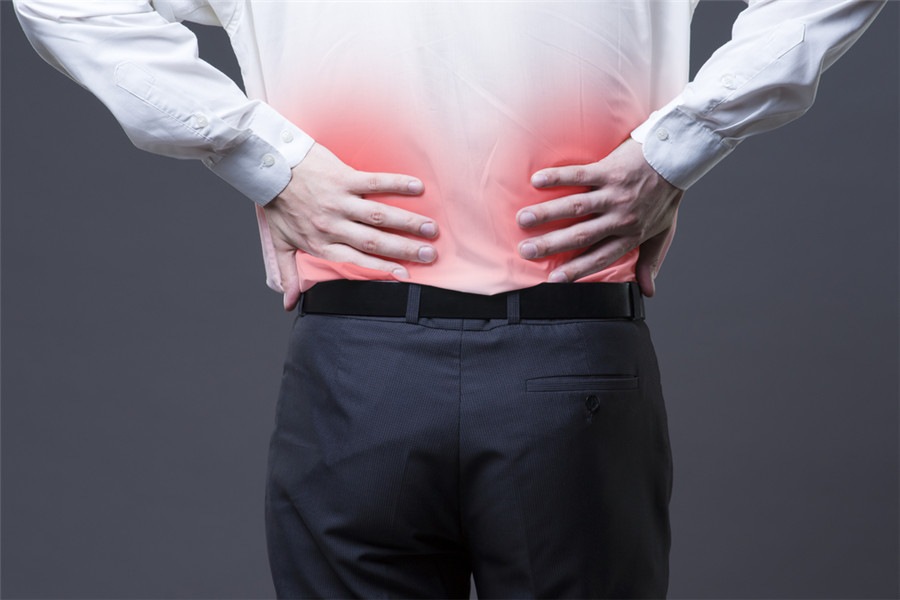
Let’s start with a few questions:
Is lumbar disc herniation the same as lumbar disc herniation?
Can lumbar disc herniation be diagnosed by lumbago + thigh pain + lumbar disc herniation?
Is Bed Rest Required for Conservative Treatment of Lumbar Disc Herniation?
Is it necessary to operate on lumbar disc herniation with nerve root symptoms and signs?
Protrusion of lumbar intervertebral disc
Intervertebral disc herniation refers to the rupture of the annulus fibrosus of the intervertebral disc, and the nucleus pulposus tissue protrudes (or protrudes) from the rupture in the rear or spinal canal. This is actually just a pathological change, or imaging manifestation, which is almost an indispensable change in the process of human aging, just like wrinkles on the face and white hair. This is not a disease.
According to literature reports, the incidence of lumbar disc herniation is very high in asymptomatic people.
In addition, a long-term follow-up study found that these volunteers with disc herniation were not related to the subsequent occurrence of lumbago and the duration of lumbago.
Protrusion of lumbar intervertebral disc
Lumbar disc herniation refers to a clinical syndrome in which lumbar disc herniation causes stimulation or compression of adjacent spinal nerve roots, resulting in a series of symptoms such as lumbar pain, numbness of one or both lower limbs, pain, etc.
Professor McCulloch is a milestone figure in the study of lumbar degenerative diseases. His diagnostic criteria have been used up to now:
1. Leg pain is greater than lumbago, mainly limited to sciatic nerve or femoral nerve innervation area;
2. Skin area sensory abnormality;
3. The straight leg elevation test is positive, the angle is less than 50% of the normal, or the healthy side straight leg elevation test is positive;
4. It has 2 of 4 items, including muscular atrophy, weakness, hypoesthesia and weakened tendon reflex.
5. Imaging features consistent with clinical manifestations.
According to the above diagnostic criteria and the pathological features of lumbar disc herniation, lumbar disc herniation must not only have pathological changes (imaging manifestations) of lumbar disc herniation, but also have clinical manifestations of corresponding nerve structure damage, pain and numbness with root distribution characteristics.
Therefore, even if there is obvious lumbar disc herniation on imaging and regional pain in the waist, buttocks or thighs, if there is no rule of nerve root distribution, the diagnosis of lumbar disc herniation is questionable.
Is it necessary to stay in bed for conservative treatment of lumbar disc herniation?
Most monographs, Chinese literatures and even textbooks in China advocate that strict bed rest is necessary for conservative treatment of lumbar disc herniation. However, from searching English literature, we find that this is not the case.
Spine Magazine, the most authoritative journal in spinal surgery, has published a document that suggests that patients with acute lumbago can get less benefits (pain and functional rehabilitation) from bed rest than from continuing to maintain daily activities. However, for patients with lumbar disc herniation, there is almost no difference between bed rest and keeping active.
There are many literatures consistent with the above views, and there are few research reports advocating strict bed rest. Thus, bed rest is not necessary. If the patient’s pain and dysfunction are not serious enough to be difficult to move, it is not necessary to restrict his activities artificially and strictly require bed rest.
Surgical indications for lumbar disc herniation
At present, there is no unified opinion on this. But should surgery be performed if there are typical neurological symptoms and signs?
Surgical treatment can be considered for the following patients:
Patients with Lumbar Disc Herniation Diagnosed Definitely:
(1) Cauda equina syndrome or acute severe local paralysis or progressive aggravation of paralysis;
(2) Accompanied by stubborn nerve root pain (morphine cannot relieve) or still cannot relieve after systematic conservative treatment for 6-8 (12) weeks.
Generally speaking, surgery is safe and the incidence of complications is low. Symptoms can usually be improved faster and to a greater extent through surgery. However, non-surgical treatment is also very safe. Unless cauda equina syndrome and progressive aggravation of nerve damage occur, non-surgical treatment can eventually achieve better results.
In other words, most discectomy can be avoided without any long-term damage. If the symptoms cannot be tolerated and if you want to recover as soon as possible, you can consider surgical treatment.
For patients with lumbar disc herniation accompanied by non-specific lumbago, please do not cut the disc in the name of lumbar disc herniation.
